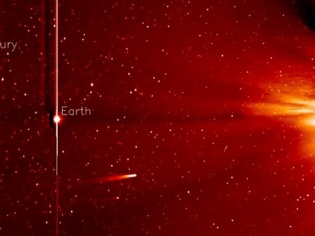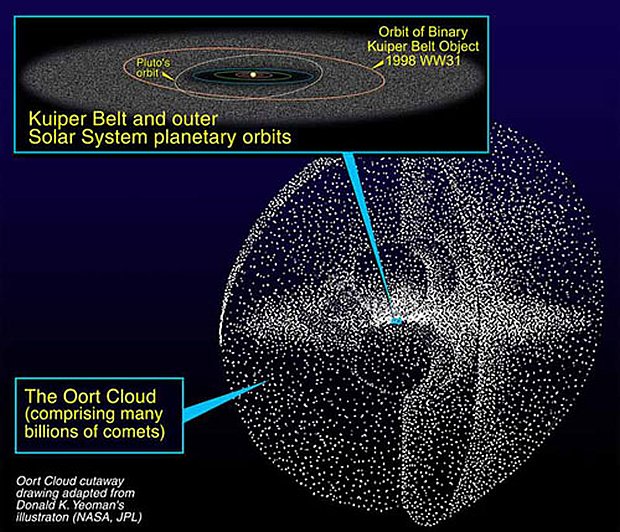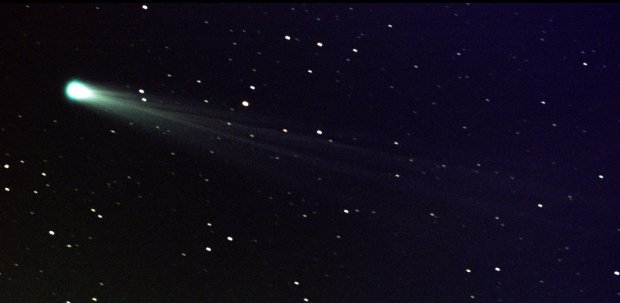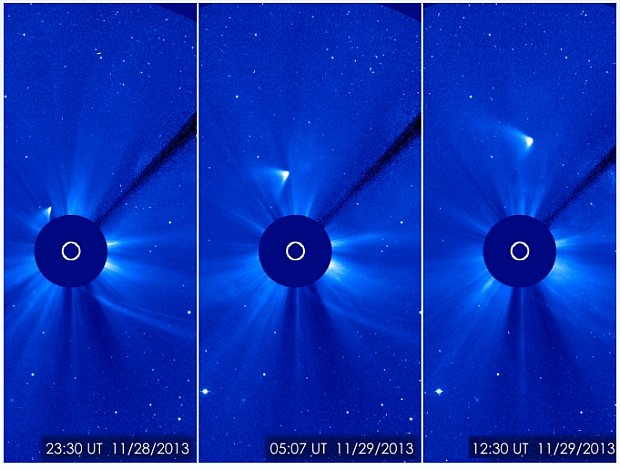-
Chandrakant 'CK' Isi
04th Dec 2013
As you may have already heard, Comet ISON is set for a close encounter with the Sun. For those not in the know, ISON is also called Comet Nevski-Novichonok in honour of the folks who discovered it — Vitali Nevski and Artyon Novichonok detected this heavenly body from the Kislovodsk, a Russia-based observatory. This observatory is a part of the International Science Optical Network that boasts of 30 telescopes in ten countries.
Where has it come from?
Astronomers have categorised the ISON as a sungrazing comet because it will travel extremely close to the Sun's surface during its perilous journey. The comet is said to have originated from the Oort cloud, which is roughly a light-year (approx 9.5 trillion kilometres) away from the Sun. Oort cloud is home to many comets that hold primordial ice, which is believed to be as ancient as four and a half billion years old. These comets are sometimes pulled out of this cloud by a passing star, and some of those end-up in the path of our Solar system.
What will happen?
It has been documented that most sungrazing comets get evaporated or destroyed by Sun's heat, radiation, and gravity. According to SOHO (Solar and Heliospheric Observatory) satellite, a joint project between NASA and ESA (European Space Agency), hundreds of sungrazers have been destroyed by the Sun since 1996. It's said that the ISON will get as close as 1,174,821 (approx) kilometres to Sun's surface. During this period, the comet's temperature is expected to reach 2760 degree C. NASA's manager of Near-Earth Object Program, Don Yeomans, has suggested three possibilities when the ISON flies by the Sun. One, it would survive the Sun's wrath and shine on us in December. Two, the Sun might break it into pieces. And three, if it's very weak, the comet will turn into a cloud of dust.
Five-minute exposure shot taken at NASA's Marshall Space Flight Centre. Image courtesy: NASA.Why is everyone excited?
Since this comet is coming close to the Sun, astronomers will get a chance to learn more about what these comets are made of. As mentioned earlier, it retains the primordial ice formed billions of years years ago, which undoubtedly is something that every scientist will be glued on to via SOHO and STEREO (Solar Terrestrial Relations Observatory). Hopefully, this will help us understand our solar system better. And guys, this fella has travelled more than five-and-a-half million years just to say "Hi" to us! Whether or not it survive the hostile Sun, it's most likely to put up quite a spectacle for us in December.Before signing off, do check out this time-lapse video shot from NASA's STEREO spacecraft. It shows a fraction of ISON's journey, and if you watch closely, as a bonus, you also get to see the smaller comet Encke. Encke too has an interesting story — it's a frequent visitor that pays us a visit once every three years.
Update: Comet ISON made its closest approach to the Sun and is not visible since then. Here's NASA's statement about the incident: "While the fate of the comet is not yet established, it is likely that it did not survive the trip."
Update 2: The ISON seems to be quite a fighter. Just when the astronomers thought that this comet has been destroyed by the Sun, a new set of images from SOHO (Solar and Heliospheric Observatory) suggest that a small nucleus may be intact.

Comet ISON's Close Encounter With The Sun | TechTree.com
Comet ISON's Close Encounter With The Sun
Everything you need to know about the comet of the century.
News Corner
- DRIFE Begins Operations in Namma Bengaluru
- Sevenaire launches ‘NEPTUNE’ – 24W Portable Speaker with RGB LED Lights
- Inbase launches ‘Urban Q1 Pro’ TWS Earbuds with Smart Touch control in India
- Airtel announces Rs 6000 cashback on purchase of smartphones from leading brands
- 78% of Indians are saving to spend during the festive season and 72% will splurge on gadgets & electronics
- 5 Tips For Buying A TV This Festive Season
- Facebook launches its largest creator education program in India
- 5 educational tech toys for young and aspiring engineers
- Mid-range smartphones emerge as customer favourites this festive season, reveals Amazon survey
- COLORFUL Launches Onebot M24A1 AIO PC for Professionals







TECHTREE